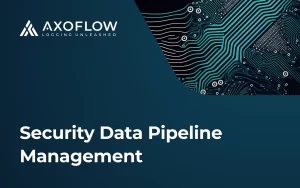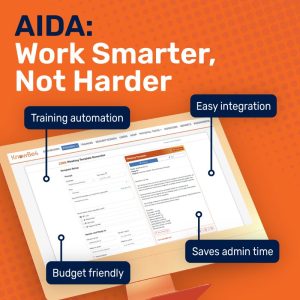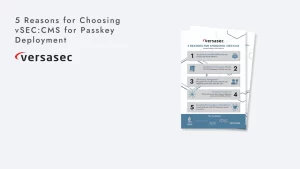
Every organization can draw a line from their entire operation to privileged accounts and systems. Within every system a company uses, there’s a privileged account behind it to access everything from employee emails to sensitive databases and personally identifiable information (PII) data. No matter what risk you point at in an organization, you can draw a threat vector from that risk to a privileged account. With 70 percent of breaches linked to privilege abuse, organizations need a streamlined approach to protecting identities and privileged access. Because these accounts pose an elevated risk, it’s key to get them under control as soon as possible. Speed is key. There are significant benefits to accelerating the privileged access management (PAM) implementation process.
So what are the most common reasons an organization would look to quickly deploy PAM, and what challenges that come with those reasons?
- Facing an audit or looking to close audit points
Security auditors will review how privileged accounts are managed and look for any gaps in coverage. Additionally, increasingly rigorous cyberinsurance requirements demand that a PAM solution must be implemented to qualify for coverage.
Often, organizations won’t recognize their lack of PAM controls is a problem until it becomes a problem.
For example, if a group of admins share a set of root accounts for a sensitive database and there are no problems, the business won’t recognize that the lack of accountability is a problem.
But auditors will look for these types of gaps and will highlight them to be amended. Depending on the types of compliance requirements an organization must adhere to, there can be fines for non-compliance.
The faster that gaps can be closed via privileged access management, the less likely your organization will be fined or penalized, which in turn puts you on an accelerated path to compliance.
- Limited individual accountability and visibility into who has access to what
Organizations often don’t have a full picture of who needs privileged access. Especially for sensitive data, visibility and accountability over the users that require privileged access is crucial.
When IT teams have visibility and accountability into who is accessing what, the faster they can recognize anomalies and bad behavior and take action. With some PAM solutions, these actions can be taken automatically when anomalies are detected..
Out of this improved visibility and accountability, security teams can then take steps to enhance security by eliminating orphaned accounts and eliminating individuals with static or excessive privileges.
- Enhanced security without disrupting productivity
A common fear among organizations that need to quickly implement a PAM solution due to audits or compliance reviews is that they often anticipate that the deployment will be costly, time consuming, and adversely impact other business initiatives. Security expenses are often looked at as a cost, rather than as an investment in business operations.
However, a PAM implementation doesn’t have to mean making compromises before seeing a return.
Next-generation PAM — or one-click access — allows organizations to implement a solution – and achieve visibility and accountability – without disrupting daily operations.
For example, a business with a short-term plan to get PAM in place and a longer-term plan to put up guardrails after analyzing data further, can use One Identity Safeguard with one-click access. Users that meet select criteria can receive temporary elevated privileges (privileged session) without accessing or even touching the PAM security solution.
This type of capability is made much easier when an organization has an identity management system in place, as it can further expedite the PAM implementation process. When integrated with an identity management system, a frictionless PAM solution can quickly get Just-In-Time (JIT) access use cases up and running.
Accounts are given privileges and users are assigned to those accounts when necessary. In other words, a user that needs elevated access is assigned to an account with elevated privileges. When that account is requested—then and only then—is the account given those elevated privileges. Once the user is done with the account, The elevated privileges are removed from the account, the account is disabled, and the user loses access to the account.
As user behavior data is gathered from an initial privileged access management implementation, that data can be stored to create a baseline and used to analyze future user actions on privileged accounts. From there, more guardrails – such as user-behavior analytics tied to a set of security actions can further safeguard those accounts.
With frictionless PAM implementation, businesses can accelerate their return on investment, reduce project costs and have minimal impact on the productivity of privileged users.
Steps to expedite the privileged access management implementation process
While these are the typical reasons and challenges around why companies may be looking to implement PAM, a fast and smooth implementation – regardless of PAM vendor – hinges on preparation. Though a vendor can have an impact on the speed of a PAM implementation process, there are a few steps your organization can take internally to speed up PAM deployment.
- Analyze privileged access management threat vectors
One of the best things an organization can do to prepare for a PAM solution implementation is to analyze and inventory accounts that pose the most risk. Teams should be asking a series of questions when approaching this exercise:
- What are processes and surfaces that pose the biggest risks?
- How would those be ranked according to risk?
- What processes are tied to what accounts, and what accounts do those processes rely on?
Think beyond what organizations may normally consider as privileged accounts. For example, consider scenarios where a compromised social media account could tank a stock price. High risk accounts aren’t always necessarily IT-owned accounts.
Don’t overlook how helpful this analysis can be. If every privileged account is accounted for, prioritized and on hand, organizations will have a solid understanding of their potential risks and vulnerabilities, as well as a roadmap of what accounts should be placed under privileged management first.
- Engage with users and stakeholders
PAM is not just an IT or security team initiative. Individuals such as application owners and process owners should also be involved in any PAM implementation. Change management, as well as executive sponsorship, are also key to successful PAM project rollouts and ongoing maintenance.
- Short-list highest priority use cases
Since the heavy lifting of mapping out and prioritizing privileged accounts is complete, the next step is to put together priority PAM use cases.
Though these workflows will be tailored to each individual business, it’s important to make sure vendors can support organizational use cases before finalizing vendor selections. Keep in mind the requirements the higher priority use cases will need to use, as well as keep an eye on functionalities that will need to scale to lower-priority use cases.
The difference between a fast and slow PAM implementation process can hinge on whether or not high-priority use cases are mapped out, prioritized and ready to share with potential vendors.
- Work alongside potential partners or vendors
Adding another vendor to your infrastructure won’t magically fix every issue in your organization. Plus, integrating functionalities across different vendors can be challenging if the new solution doesn’t integrate easily.
Across the different services that add value to your organization, consider ways of reducing the amount of moving parts that need to be integrated across vendors.
For example, if an organization has different vendors to handle individual functions, such as user identities management, MFA, and access management, that’s three technologies to integrate, vendors to pay, and separate resources to manage. Consolidating PAM vendors removes operational overheads, reduces cost of ownership and minimizes integration headaches with multiple technologies.
- If replacing your PAM solution, look at your attack surfaces with new eyes
Companies looking to replace their current PAM solution are much more common than businesses without privileged access management at all. However, if a business has outgrown all that their PAM solutions, it’s clear that a business would want to address that lack of functionality as quick as possible.
Instead of just looking at a 1:1 rip and replace of PAM processes, take the opportunity to do a fresh review the organization’s approach to PAM. Don’t get locked into a siloed way of thinking or bogged down with the current processes a PAM solution handles. It’s important to consider the business problems you’re trying to solve instead of focusing just on the tech currently in place.
- Establish a baseline of normal behavior and best practices
As more privileged access management use cases are translated into active secured processes, don’t forget to formalize and implement best practices to better scale PAM workflows. Eliminating orphaned accounts, determining which identities should have what access, just-in-time elevation of privileges, separation of duties, using MFA, to documentation and periodic reviews of PAM processes, are just a few ongoing best practices that help secure an organization’s most sensitive accounts and applications.
Whether driven by an audit, cyberinsurance requirements, or a heightened risk of an attack, securing the most sensitive data, identities and applications quickly and efficiently is a top priority. By working with an experienced unified identity security solution provider and taking steps to prepare for a swift privileged access management implementation process, your organization is poised to better defend against internal and external threats.
About DT Asia
DT Asia began in 2007 with a clear mission to build the market entry for various pioneering IT security solutions from the US, Europe and Israel.
Today, DT Asia is a regional, value-added distributor of cybersecurity solutions providing cutting-edge technologies to key government organisations and top private sector clients including global banks and Fortune 500 companies. We have offices and partners around the Asia Pacific to better understand the markets and deliver localised solutions.










